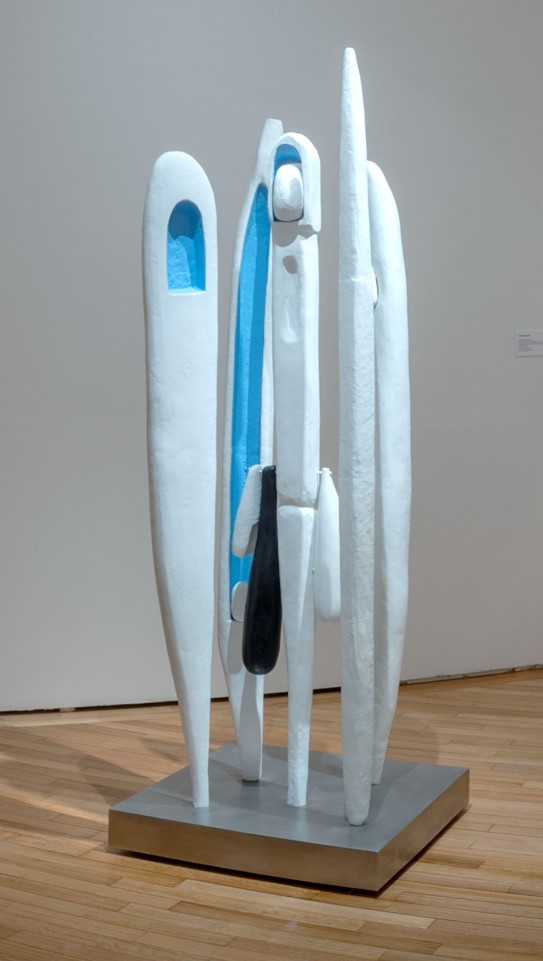Quarantania, Personages, & Louise Nevelson

Transcription
Narrator
In the 1950s after moving from Paris to New York, Bourgeois began working with sculpture. For her Personages skulptures, Bourgeois experimented with wood as a material, carving pieces of cedar left over from the construction and repair of a water tower on the roof of her apartment building. The resulting sculptures are vertical, totem-like works.
Elin-Therese Aarseth
As the series of sculptures progressed, she became interested in the different possibilities of stacking or turning elements on a central pole. She also painted them in different colors, as we can see in Quarantania.
Narrator
This is Elin-Therese Aarseth, art historian at the national museum.
Elin-Therese Aarseth
While Bourgeois’s Personages can be traced back to historical avant-garde artists such as Pablo Picasso, they also align with the aesthetics of the contemporary sculptures of the New York School, in particular the work of the American sculptor Louise Nevelson who you can see in the next room…
Narrator
Louise Bourgeois and Louise Nevelson met in the 1950s in New York. They were 12 years apart in age‚ but for about a decade they saw quite a lot of each other.
Elin-Therese Aarseth
They were good friends, exchanged ideas and the works they produced in the 1950s have strong similarities. They both assembled sculptures from wood pieces, often painted black.
In her assemblages Nevelson experimented with using different kinds of found objects, such as keys, glasses, and fabrics, as well as discarded metal and wood pieces, and then she combined them into figures.
Both Nevelson and Bourgeois shared artistic practices that transgressed the traditional idea of art at the time. Their sculptural practices were performative, involving a physical dialogue with the audience and space.
Both artists experimented with theatre and the performing arts, and likely they inspired and helped each other.